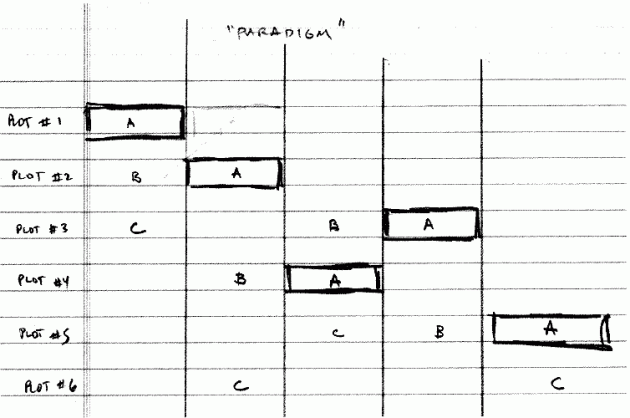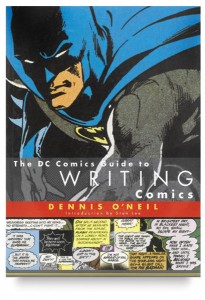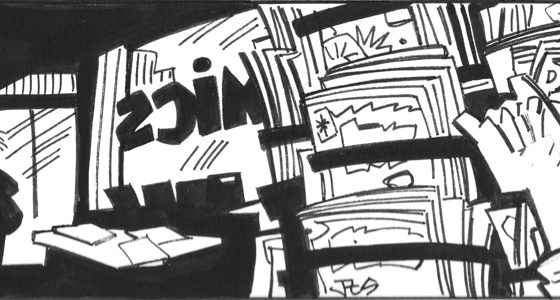There’s been a bit of conversation lately about something Denny O’Neil kindly labeled “the Levitz paradigm” – a plotting tool I used in the Legion’s heyday to keep track of the many fluid plots and subplots. The physical ‘device’ is pretty simple, and the theory is one that was rapidly evolving in super hero comics in the ‘80s but which has deep roots in soap opera. Warren Ellis said some nice things about it recently online, and I wanted to both point out its prior ancestry and my modest contributions.
Today the terms “A plot” and “B plot” are conversational language, but in the ‘80s that wasn’t the case. Stan Lee and Roy Thomas had been developing the tools in comics since about 1965, and Robert Altman had been weaving it in films, but it hit the broadest mass culture when it moved to network prime time with HILL STREET BLUES.
If the ‘paradigm’ was anything beyond a charting tool, it was a few (sometimes ignored by me, sadly) guidelines:

- start your secondary plots low and raise them slowly (maybe as a C or D plot before it gets to be a B, much less an A).
- every time you visit a plotline, it needs to progress in that visit (if it’s boy meets sheep, one of them should end the scene in an emotional moment, for example).
- vary the number of beats before you escalate to an A.
 And all of this is, of course, secondary to basic plotting rules like making stakes important to the characters, and flowing plots from the characters themselves. Or one that I’ve grown fonder of in my recent years of teaching, that what reveals/defines character is choices, particularly choices with costs.
And all of this is, of course, secondary to basic plotting rules like making stakes important to the characters, and flowing plots from the characters themselves. Or one that I’ve grown fonder of in my recent years of teaching, that what reveals/defines character is choices, particularly choices with costs.
It’s a fairly simple and useful charting tool for doing serial comics, and if you’re curious to look at it, check out Denny’s DC Guide to Writing Comics.



Hi Mr. Levtz, I have a question for you about the structure of your paradigm, I’am currently writing a maxi-series to pitch to Image Comics. I already own a copy of the “DC Comics Guide To Writing Comics” and read Dennis O’ Neil’s explaination of the paradigm, which has answered many questions for me and plus has given me a somewhat okay grasp on the subjects matter. I’ve created a paradigm / grid using the “Microsoft Word 2007” software. I would like to send you a copy of it, as a PDF, for you to review and let me know if I’m doing it right, or at least heading in the right direction. I will appreciate any feedback that you can give me. Thank you.